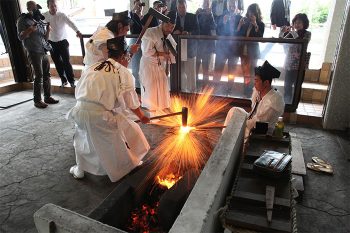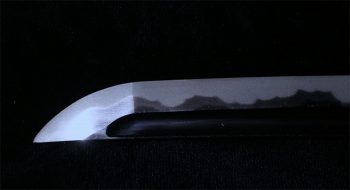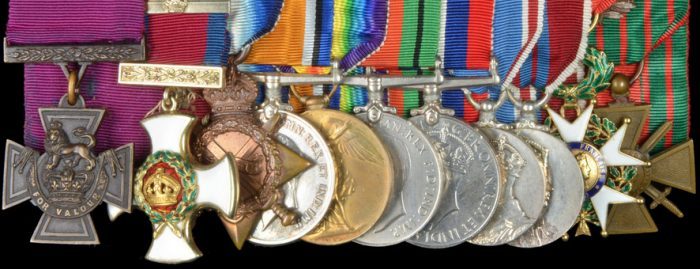Rupert Neelands, Antiquarian Book and Manuscript Specialist
Charles Lutwidge Dodgson (1832-1898), known to all by his pseudonym of Lewis Carroll, was born into a high-church Anglican family living in Cheshire, the third of eleven children. His father, also named Charles, obtained a double first in mathematics and classics at Christ Church, Oxford, and taught Mathematics at his college before marrying a cousin, Frances Jane “Fanny” Lutwidge from Hull, in 1827. Perpetual curate at Daresbury, Cheshire, from the year of his marriage, then from 1843, when his son was aged twelve, rector at Croft-on-Tees in Yorkshire, Charles Dodgson was the devout author of twenty-four books on theology and religious subjects.
The son was a humourist. He possessed the natural ability to amuse children, and first practised storytelling, versifying, and punning on his own siblings. With this comic ability came the unshakeable gravitas of excelling at mathematics. Like his father, Charles junior read and taught mathematics at Christ Church, taking first class honours in the subject in 1854 and a second in classics. His exceptional talent won him the Christ Church Mathematical Lectureship in 1855, and he remained a mathematical professor until 1881.

Alice Pleasance Liddell, aged seven, photographed by Charles Dodgson in 1860
Charles’s jokes were rather literary or donnish in nature. His pseudonym, first used in March 1856 for publication of a poem on “Solitude”, was a piece of linguistic drollery, a translation of his own name into Latin as Carolus Ludovicus. The two names cunningly inverted were then translated back into English as Lewis Carroll. He enjoyed getting pieces into print. From 1854 onwards, he published poems and prose pieces, games and puzzles, in a string of magazines which included Punch and Dickens’s All the Year Round. A bibliography of over 300 items reflects the great energy and fertility of his mind, as do the 98,721 letters which he sent and received during the last thirty-seven years of his life.

Charles Lutwidge Dodgson at Christ Church 1856-60 (John Rich Album, NPG)
Charles was also an “inveterate gadgeteer” (ODNB) and problem solver. He devised a travelling chess set with holes into which the pieces could be secured. He loved prescribing or improving rules, and even suggested fairer rules for knockout tennis competitions. A spin off from the Alice books was the “The Wonderland Postage-Stamp Case” in 1889. Accompanied by the pamphlet Eight or Nine Wise Words about Letter-Writing, this was intended to promote the habit of correspondence among children. Among the games he devised was an early version of “Scrabble”.

As lecturer in mathematics, Charles Dodgson had rooms on the first floor of Tom Quad, Christ Church
His favourite contrivance was the camera. He enjoyed considerable reputation as a collodion wet-plate photographer, acquiring his first camera and lens on 18 March 1856, very shortly before the appearance at Christ Church of a new Dean, Henry George Liddell and his family. The Dean’s habit of being consistently late for services may have made him the model for the White Rabbit. But a growing acquaintance with the three Liddell daughters, Edith, Lorina and Alice, affected Charles’s life much more deeply. On 25 April 1856, while on his way to the Deanery to photograph Christ Church Cathedral with a borrowed camera, he met the three girls together for the first time. Alice, the middle daughter, was then aged four. He noted that they “were in the garden most of the time” but “were not patient sitters”. Their family was also large, eventually numbering ten siblings watched over by their governess, Miss Prickett.
Charles first photographed the Liddell daughters with his own camera on 3 June 1856. Their heavy clothing is noticeable in many of his portraits. Like other photographers of the period, he sometimes put his young sitters in more free flowing theatrical outfits. It is a well-known and hardly surprising fact that they sometimes posed nude or semi-nude for him. His 1860 photograph of Alice as a beggar girl was greatly admired by Tennyson.

Alice Liddell as “The Beggar Maid” by Charles Dodgson, c. 1858
The Dean’s three daughters became frequent sitters. In 1932 Alice recalled that they never resented having to sit still because of the wonderful stories Charles would tell them and even illustrate with his drawings. Alice, the prettiest, is typically seen in photographs “with short, straight dark hair cut in a fringe, large blue eyes and a strikingly gentle and innocent face” (Sally Brown, editor, Alice’s Adventures Under Ground: The Original Manuscript, British Library, 2016, pp.8-9). As his visits to the Deanery increased in frequency, “his emotional attachment to Alice grew and ripened, and for some seven years he lived the charmed life of a cherished friend and sometimes consort to the beautiful, impetuous child” (Morton N. Cohen, ODNB).
The literary Alice, the heroine of Charles’s stories, took on a definite life of her own on 4 July 1862 during a boat trip “up the river to Godstow”. Listening to him speak of her encounters with humanised animals were Lorina, Alice, and Edith, now aged from thirteen down to eight. Charles himself was thirty-three. Robinson Duckworth, another young don, was also present. The genesis of the story was recalled in the poem, “All in the Golden Afternoon”, used as a preface to Alice in Wonderland. This describes how the three girls begged to have a story from him. When he had exhausted “the wells of fancy” they demanded more. The poem confirms that construction of the characters and incidents was gradual. “Thus grew the tale of Wonderland:/Thus slowly, one by one,/ Its quaint events were hammered out — /And now the tale is done”.

Alice, Ina, Harry and Edith Liddell by Charles Dodgson, albumen print, spring 1860 (NPG)
On 6 August, a month after his inspired narration, Charles again took the “the three Liddells” upriver to Godstow. On the way, he seems to have become slightly exasperated because only one amusement would satisfy them, a continuation of the story. “I had to go on with my interminable fairy-tale of Alice’s adventures,” he confided in his diary. The story then passed from an oral to a written stage. At the insistence of his favourite child, he began “writing the fairy-tale for Alice” on 13 November 1862. The tale universally known as Alice in Wonderland was first called Alice’s Adventures under Ground; it was to be a keepsake for Alice, a showpiece in the Deanery, not for public consumption.

Decorative title-page to a treasured literary manuscript, Alice’s Adventures under Ground by Charles Dodgson (1863), now in the BL

From oral tradition to finished manuscript: the inscription to Alice Liddell on the title verso faces the opening page of Alice’s Adventures
Charles finished copying out the story in his neat “manuscript print” hand on 10 February 1863, leaving spaces for the addition of his own drawings (he was an eager but untrained artist). The attitudes of the characters in his thirty-seven sepia ink drawings were to be carefully followed by John Tenniel, as the illustrator of Alice in Wonderland. Charles portrayed himself as the Dodo, and Lorina and Edith as the Lory and Eaglet. Alice, now ten years old, got the star part. Yet Charles would always deny that his eponymous heroine was the Alice he knew. He certainly decided that his heroine should not physically resemble his “ideal child-friend” (Letters, 561). In his manuscript her portrait with dark, bobbed hair appears at the foot of the penultimate page, copied from a photograph taken at the age of seven. Otherwise the long, fair hair of the heroine could have been modelled on Edith, Alice Liddell’s younger sister.

Pen-and-ink portrait of Alice Liddell from photograph on the penultimate page of Charles Dodgson’s manuscript

The heroine says goodbye to her feet in one of the author’s original illustrations (Alice’s Adventures Under Ground, p.11)
The morocco-bound manuscript which Charles gave to Alice in November 1864 was a substantial part of the book that we know as Alice in Wonderland. It eventually became a book in its own right when a facsimile was published in 1886, late in Charles’s life. In 1928 Alice was forced to sell the manuscript to pay death duties. It then came into the ownership of Eldridge Johnson, and following his death in 1945 was given to the British Library by a group of American benefactors in 1948.
Charles kept his word by giving the finished story to Alice for Christmas, but he also broke an intimacy by first showing it to the family of the children’s author, George Macdonald, who insisted he publish. When Henry Kingsley, brother of Charles Kingsley, saw it on proud display at the Deanery he suggested the same thing. Instead of being a finishing point the manuscript became a stage in a continuing creative process, it needed enlarging for the public gaze. Charles took on the cost of publication and chose the Clarendon Press as printers, receiving specimen pages from them in the summer of 1863. Alexander Macmillan, co-founder of the Macmillan publishing house, agreed to distribute the book on commission.
Meanwhile Charles’s happy relationship with the Liddell family seemed to slowly ice over. In June 1863 a serious rupture occurred. The question of why he started keeping a formal distance from the family and his “ideal child-friend” has no certain answer, especially as the relevant page of his diary has been razored out. Despite Alice being only eleven, there is the possibility that he made a marriage proposal which was received unfavourably. An alternative suggestion is that Alice’s older sister, Lorina or “Ina”, became too strongly attached to him. Thereafter Alice grew up and grew away from him. By 1871, when Through the Looking Glass was published, she would be nearly twenty years old and a child no longer.
Being busy with publication must have been some compensation to Charles for the loss of Alice’s company, devastating though this was. He added more text to his manuscript version, completing the first sections by May 1864. The Cheshire cat episodes were among the fresh material, and there were two entirely new chapters, “Pig and Pepper” and “A Mad Tea Party”. The Mad Hatter and his friends, the March Hare and Dormouse, also appear in the trial of the Knave of Hearts. The title itself became the more euphonic Alice in Wonderland.

“Punch”, caricature of John Tenniel by Leslie Ward (“Spy”), published in Vanity Fair, 26 October 1878
The choice of John Tenniel, the leading Punch cartoonist, as illustrator was a happy one. He imbues the characters encountered by Alice with an absurd solemnity. Less to Charles’s liking, he worked slowly and took publication well beyond the hoped-for date of Christmas 1864. Tenniel was charged with providing illustrations in all sorts of shapes and sizes, yet also given the freedom to select scenes and decide how characters should be portrayed. Many of his designs are refinements of Charles’s original drawings for the fair copy manuscript. New characters such as the Cheshire Cat and March Hare were of Tenniel’s own invention but stylistically uniform with everything else. The Punch artist was well assisted by the wood-engraving of the Dalziel brothers. The representation of the heroine is more defined in line block. A much greater air of gravity is imparted to Alice, her dress and general disposition are immaculate.

Tenniel’s depiction of the White Rabbit scurrying into the darkness as Alice pleads for help (ch. 2)
Although Tenniel had agreed to the project on 5 April 1864, Charles only saw a first drawing, the White Rabbit scurrying away from Alice, on 12 October. A postponement until Easter 1865 was agreed with Macmillan after the death of the artist’s mother. Even so, Tenniel failed to meet the new deadline, not least because the number of illustrations rose from twelve to an eventual forty-two. Once the final drawing was received in June 1865, the Clarendon Press went quickly to print, and had 2000 copies ready by the end of the month. The binding of bright red cloth, with gilt medallions of Alice and the Cheshire Cat, was Charles’s choice (see his letter to Macmillan, 11 November 1864). The page edges were cut but not gilded.
When only about 50 copies had actually been bound in red cloth (a few copies, including Alice’s, were in white vellum), Tenniel wrote to complain of the “disgraceful” printing. Nine pages had been printed too lightly, another nine were too heavily impressed. Exception was also taken to ink bleed, widowed lines and use of mixed fonts. The relationship between author and illustrator is not well documented; both were perfectionists, wanting the best result possible, and Charles found such stinging criticism impossible to ignore. Despite costs of £497, he suppressed the entire edition and even sought to recover the presentation copies already sent out. Most were returned, and then passed on to children’s hospitals and institutions. The other bound copies and unbound sheets were sold to D. Appleton and Company, New York, who issued them as the first American edition in 1866. All told, just 23 copies of the 1865 Alice are known to have survived from the 2000 printed.

One-page autograph letter from Charles Dodgson to Alexander Macmillan, dated Christ Church Oxford, 11 November 1864, stating that “bright red will be the best” binding colour for Alice
Following the suppression of the first edition, another edition of 2000 copies was printed by Richard Clay of Bungay. This second edition (or first edition replacement) was published on 18 November 1865 but dated 1866. Although its paper quality and typesetting were improved, the difference of a year in the date is the key change. Copies may have light blue or dark green endpapers, the red cloth binding remains a striking feature, the page edges are now gilded.

Frontispiece and title-page to the 1865 first edition of Alice in Wonderland, Bodleian Library copy
It didn’t take long for “Lewis Carroll” to become a household name. His book reached a fifth edition in 1868 with a grand total of 13,000 copies printed, and he started on the sequel, Through the Looking Glass and What Alice found There, in 1869. Later editions of Alice in Wonderland state the number of copies printed, and 98,000 was the remarkable total reached in 1932. Macmillan’s last reprint was in 1942. When Tenniel’s illustrations were used for The Nursery Alice, a version for younger children, they were colour printed for the first time (1889-90). This was another troublesome publication, however. The original edition again had to be suppressed, the author telling Macmillan that the colouring was “far too bright and gaudy” (23 June 1889).

Tenniel’s illustrations were coloured by Edmund Evans for The Nursery Alice (1890). The heroine has unmistakably long blonde hair, unlike Alice Liddell’s short, dark hair at the same age
Thanks to the harsh judgement of Tenniel, the first edition of Alice in Wonderland has long been a huge prize for collectors. Charles Dodgson’s books were appearing at auction even before his death, and in 1893 a copy of the 1865 Alice made £10. Sales of the first edition flourished in the 1920s. A random example is the presentation copy to Alice Thomas, in its original red cloth binding, sold at Hodgson’s on 15 April, 1926. This had the drawback of exhibiting “those infallible signs of its popularity in the nursery, in the way of much-fingered and soiled leaves”. The prestigious firm of Bernard Quaritch bought it for £390, a relative snip, though the equivalent of £24,000 in today’s money.

The “Mad Tea-Party” from The Nursery Alice (1890), illustrated by Tenniel, colour printed by Edmund Evans
Only two years later a far higher price was achieved for a presentation copy from the author to [Dinah] Craik (author of John Halifax Gentleman). Sold by Sotheby’s on 3 April 1928, this copy in original red cloth was described as “beautifully clean and fresh”. It went to the dealer Rosenbach for £5,000 (the equivalent of £316,500 today), and passed into the hands of Eldridge R. Johnson, the American gramophone pioneer and founder of the Victor Talking Machine Company (later RCA-Victor) whose famous trademark was the fox terrier Nipper listening to a gramophone.
Despite having made £5,000 in 1928, the Dinah Craik copy could only manage $7,500 when the Eldridge Johnson collection was dispersed in 1946. This remarkable collection included the four Shakespeare folios, the original manuscript of Alice’s Adventures under Ground, and not one but two copies of the 1856 Alice, the Craik copy and the copy belonging to the banker Louis Samuel Montagu. The latter was a special attraction. Ten original pencil drawings for the illustrations by John Tenniel, signed with his monogram, were bound into the volume. The firm of Riviere had rebound it handsomely for Montagu in 1899; and it sold for the more impressive sum of $23,000.

The levant morocco binding by Riviere on the 1865 Alice, executed for L.S. Montagu in 1899
Following the sale in 1946, both Eldridge Johnson copies of the first edition passed into the ownership of the Lebanese collector, Francis Kettaneh. When reoffered at the Kettaneh sale in Paris, 20 May 1980, they were lotted together, an extraordinary act by the auctioneers Ader Picard Tajan, who even threw in an original Tenniel drawing of Alice for good measure. The two first editions were not protected by an adequate reserve, and to his own astonishment the children’s book dealer Justin Schiller was able to buy the lot (by proxy) for FF220,000 (£22,845).
This historical low point for sales came twenty years after the auction of Lord Cross’s copy by Sotheby’s, on 15 February 1960, when bidding reached the staggering heights of £115,000 (£2,700,000 in today’s money) for a copy that was not inscribed; it had also been recased in a publisher’s binding of about 1900.

The Cheshire Cat (ch. 6), one of ten original drawings by John Tenniel in the Montagu-Johnson-Kettaneh copy of the 1865 Alice

The Cheshire Cat reproduced from Tenniel’s original drawing by the use of woodcut and electrotype blocks
Schiller published a monograph on the Montagu copy in 1990, (Alice’s Adventures in Wonderland: An 1865 printing re-described), and re-offered it for sale at Christie’s New York, on 9 December 1998, with an estimate of $1.5 to 2 million. This was a hefty sum, especially considering how few books reach even the £100,000 level; a successful outcome was by no means certain. There was no presentation inscription, the 1899 binding was fine but not original. To offset this, there were the ten Tenniel drawings preserved in the volume, and the persuasive fact that it was the author’s corrected copy, with word changes and scored passages which Christie’s cataloguer ably demonstrated to be the chosen text for The Nursery Alice. The hammer went down, only just below estimate, at $1,400,000 ($1,542,500 with premium).
In 2016 Christie’s New York endeavoured to repeat their success with the George William Kitchin copy, “one of only two copies in original cloth in private hands”. Without a presentation inscription or any insertions, an estimate of $2-3 million proved beyond reach. Nevertheless, the copy was sold for an undisclosed sum after the sale.

The original red cloth binding of the 1865 Alice, the Cheshire cat making his appearance on the back, George William Kitchin’s copy
The value of the second (first published edition) of 1866 also see-saws considerably from copy to copy and year to year. A lot of copies have turned a rather dingy red, perhaps after exposure to the smoke and soot of open fires. These will tend to bob along at the £2,000 to £4,000 level at sales. However, a copy in original cloth rebacked, with frayed leaves, some repaired, managed to sell for £7,000 at Sotheby’s in 2019, benefitting from the insertion of 13 autograph letters from the author to his bookseller, F.S. Ellis.

Frontispiece and title to the second edition of Alice in Wonderland, dated 1866 though published 1865, Tyrwhitt copy
To have a value of £7,000 or above, a second edition of Alice needs to be in sparkling condition, to have important inserts or else be a presentation copy (the ideal copy would tick all three boxes). Presentation copies are less affected by issues of condition. Despite the innumerable small defects listed in the catalogue, an example inscribed by the author to his friend Richard St. John Tyrwhitt, and containing a presentation letter, made £23,000 hammer at Christie’s on 13 December 2017. At the same auction house the following July, a copy came up with a presentation inscription and two inserted letters to Dodgson’s child-friend Ella Monier-Williams. This made £24,000, regardless of scattered spotting and soiling, small ink stains, marginal repairs, and a replacement morocco binding.

The author’s presentation inscription to Richard St. John Tyrwhitt at the head of the half-title adds enormously to the value of the copy
All Lewis Carroll fans will be wanting to see the forthcoming V & A exhibition, “Alice: Curioser and Curioser”. Copies of these and other rare editions will be on display from 27 March 2021.
























































